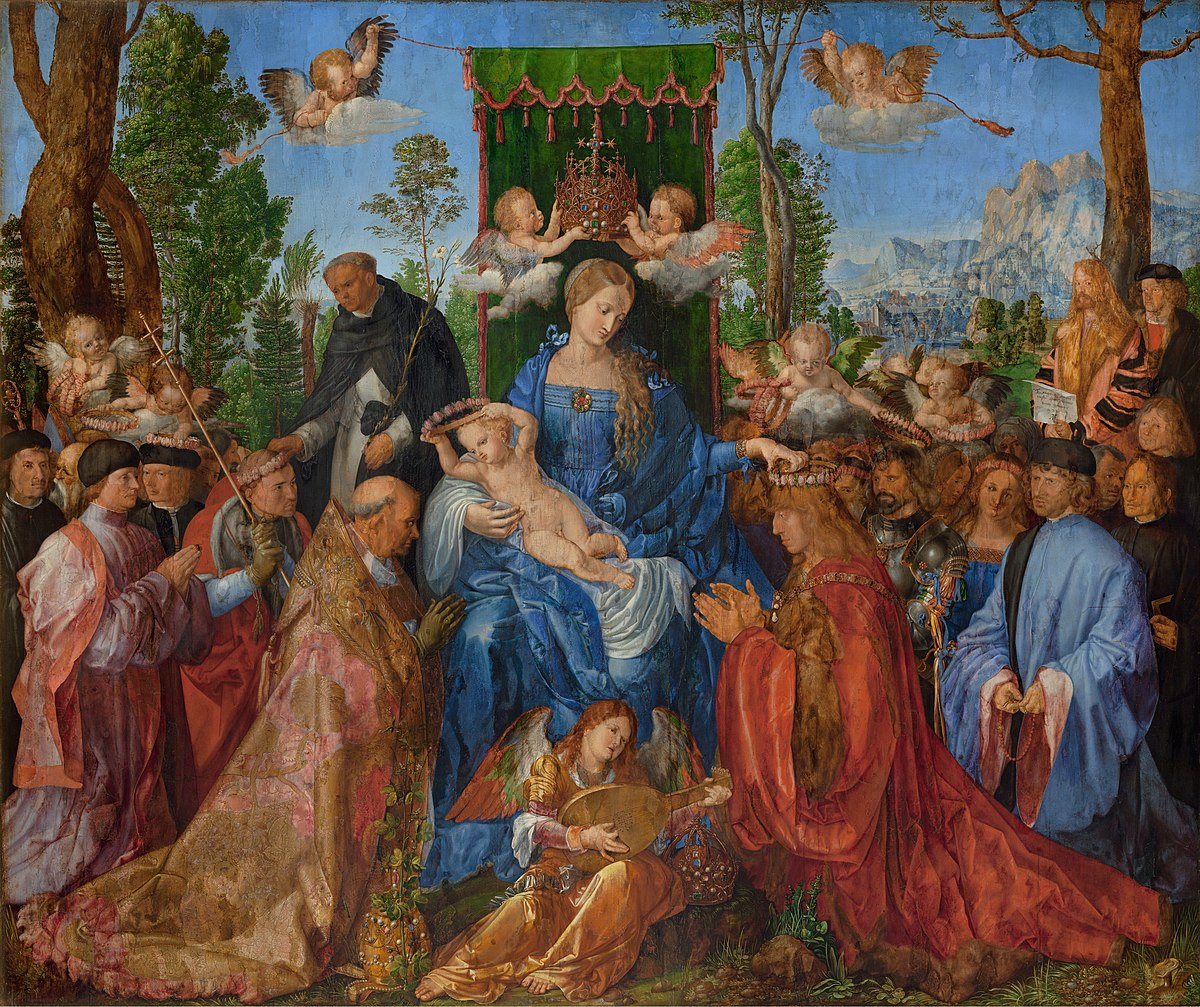Feast of the Rosary (Q1170194)
Label from: English (en)
movement:
German Renaissance (Q2455000)
genre:
religious art (Q2864737)
artist:
Albrecht Dürer (Q5580)
collection:
National Gallery Prague (Q1419555)
location:
San Bartolomeo (Q1648609)
Sternberg Palace (Q1291597)
Strahov Monastery (Q969482)
Rudolfinum (Q1130137)
owned by:
San Bartolomeo (Q1648609)
Emperor Rudolf II (Q150586)
location of final assembly:
Venice (Q641)
depicts:
Christ Child (Q942467)
boy (Q3010)
Mary (Q345)
woman (Q467)
Burkhard von Speyer (Q19816887)
Albrecht Dürer (Q5580)
Confraternity of the Rosary (Q2167194)
Saint Dominic (Q44091)
angel (Q235113)
pope (Q19546)
Maximilian I (Q150726)
Hieronymus the German (Q120785168)
instance of:
altarpiece (Q15711026)
painting (Q3305213)
Bildindex der Kunst und Architektur ID:
01030410
RKDimages ID:
286470
Google Arts & Culture asset ID:
ngGI_fW-CrcSrw
catalog URL: http://sbirky.ngprague.cz/en/dielo/CZE:NG.O_1552
information from the San Bartolomeo catalog
description:
Dürer’s panel was commisioned by German merchants for San Bartolomeo Church in Venice in 1506 and it represents an ideal feast of the Brotherhood of the Rosary. The Virgin and Child, St Dominic and the angels give the believers blessing in the form of wreaths of roses. All of them are assembled symmetrically around the Virgin – on the right, ecclesiastical dignitaries headed by the kneeling Pope, on the left, representatives of the worldly power – it is possible to identify the king and later Emperor Maximilian I, who is just being blessed by the Virgin. The faces of the other figures present at the feast display portrait features, but their identification is difficult, if only because the heads of some of them were changed considerably during an extensive restoration of the painting between 1839 and 1841. No change affected the face of the man under the tree on the right – Albrecht Dürer himself, who is looking on. The sheet he is holding bears his signature and date of the work’s origin. The Feast of the Rose Garlands kept attracting increasing attention in the church. This is why Emperor Rudolf II purchased the painting in 1606 and had it brought to Prague.
This tool must be connected with Wikidata to work.
